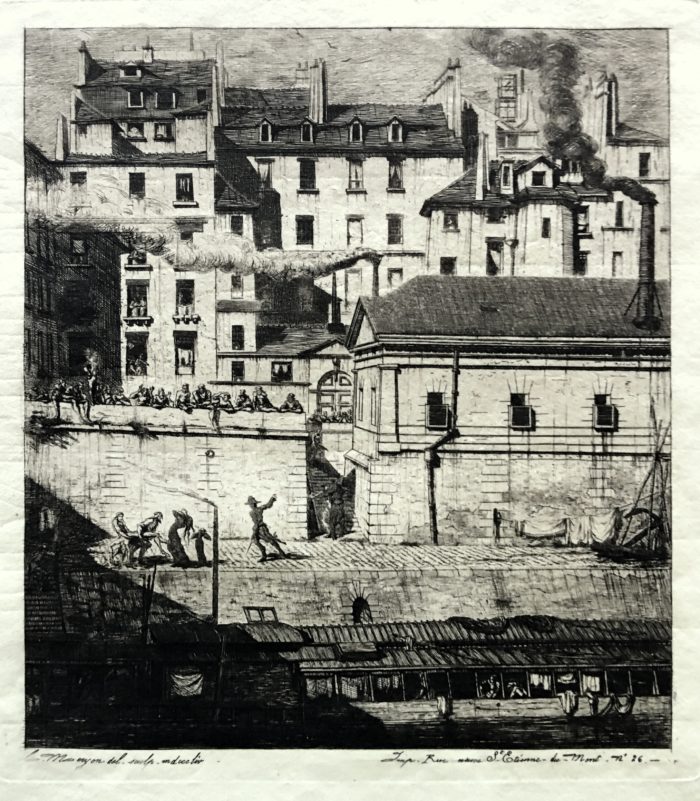La Morgue
Charles Meryon (1821-1868), La Morgue, 1854, etching, fourth state (of 7), printed in brown/black ink, Schneiderman 42 [with the inscription, date, address in the plate]. 9 3/4 x 8 3/8, the sheet 13 x 10 1/2 inches.
A fine impression, printed on thin cream laid paper in a dark brown/black ink. With the Hallines Shield watermark.
Meryon personally printed the impressions of this state (he printed all the impressions of The Morgue up to state 6 himself). In this impression he has left a subtle layer of plate tone throughout, but has wiped the plate slightly more on the central third of the plate.
The Morgue is one of the Meryon’s greatest achievements, and a landmark in 19th Century printmaking. It was done as part of Meryon’s program of creating etchings of some of the wonderful architectural landmarks of Paris that had remained essentially untouched through the years, but that were likely to be demolished or moved. (The morgue, moved after the etching was made, stood on the Ile de la Cite; it was built in 1568, and was formerly an abbatoir.) The superimposed roofs, the collision of angles, the striking contrasts of shadows all create an aesthetic excitement that was new to the art of its time, and eventually became recognized as an early expression of modernism, presaging cubism, and even precisionism. The composition has a mysterious quality not only because of its subject matter, but because of the extraordinary mood Meryon achieves through the interplay of lights and shapes.
